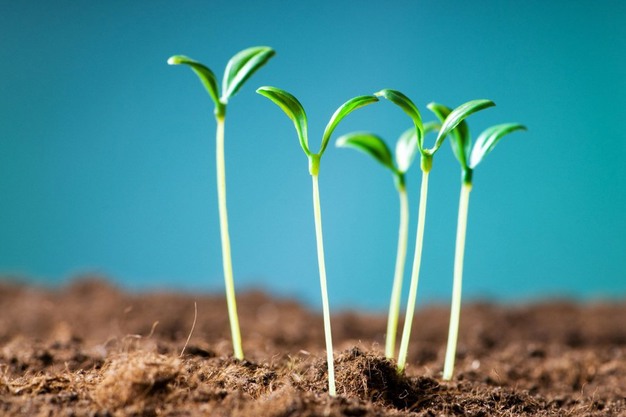The horticultural LED lighting industry is booming, and with it comes a world of terminology. For those working within this industry, understanding the terminology and methods of measurement is crucial to selecting suitable and effective lighting solutions for your application.
Efficacy and efficiency are two similar terms that are often used interchangeably. However, they still represent different concepts relating to lighting performance. Both can impact plant growth and yields and so depending on the user application, the relevance and importance of each term will vary. There are so many applications within horticultural lighting, from small-scale research labs to large-scale indoor farms, each of these applications have their own specific requirements and priorities. So, let's clarify the difference.

Efficacy
In horticultural lighting, this refers to a measurement that indicates the amount of photosynthetically active radiation (PAR) per watts of electrical power input. A lighting system with high efficacy levels will mean that there is a higher quantity of light energy, photosynthetic photons, being delivered to the exposed plants allowing them to perform more photosynthesis. It is displayed as a ratio of micromoles per joule (μmol/J). Levels of efficacy can be influenced by the type of lighting technology being implemented. Older HPS (High-Pressure Sodium) lighting systems, for example, are typically less effective than LED lighting systems and have lower efficacy meaning that they are less effective at promoting plant growth and development.
Efficiency
The term is used more generally in the wider lighting market. It measures and indicates the quantity of light output power that a lighting fixture produces per unit of electric input power. Within horticulture specifically, it essentially refers to the quantity of energy converted into light for plant growth. Higher efficiency levels indicate that there is less electrical energy wasted as heat or other forms of radiation. Therefore, efficiency can be a key consideration for users looking to reduce energy costs and minimize their environmental impact.
What is the difference?
In short, efficacy measures how effectively a lighting fixture converts electrical energy into photosynthetic photons and is measured as the ratio of light output power to electrical input power (W/W). Efficiency indicates how effectively a lighting fixture converts electrical energy into light energy and is measured as the ratio of photosynthetic photon output to electrical input power (μmol/J).
With greater efficacy, more light energy is supplied to plants, and the targeted plants can perform more photosynthesis. The greater the efficiency, the lesser the operational costs and environmental impact of a lighting fixture will be.
Why does it matter?
A lighting system will not necessarily be both high in efficacy and efficiency. It could be highly efficient at converting energy into light, however, if the light emitted is not well-suited to the specific requirements of the target plants, it may not be effective at fostering plant growth and development. Equally, a lighting fixture could be highly effective and successful at promoting plant growth, but if it is inefficient at converting energy into light, it will not be a cost-effective solution for its users.
Knowing these two concepts can be key to anyone considering horticultural lighting solutions. By selecting horticultural lighting that is optimized for both efficacy and efficiency, users can achieve increased yields as well as improved-quality crops, all whilst minimizing energy costs and environmental impacts.
For more information:
Intelligent Group Solutions Ltd.
Unit 2, Berkshire Business Centre, Berkshire Dr
Thatcham RG19 4EW, United Kingdom
Tel.: +44 1635 294600
i-groupuk.com
